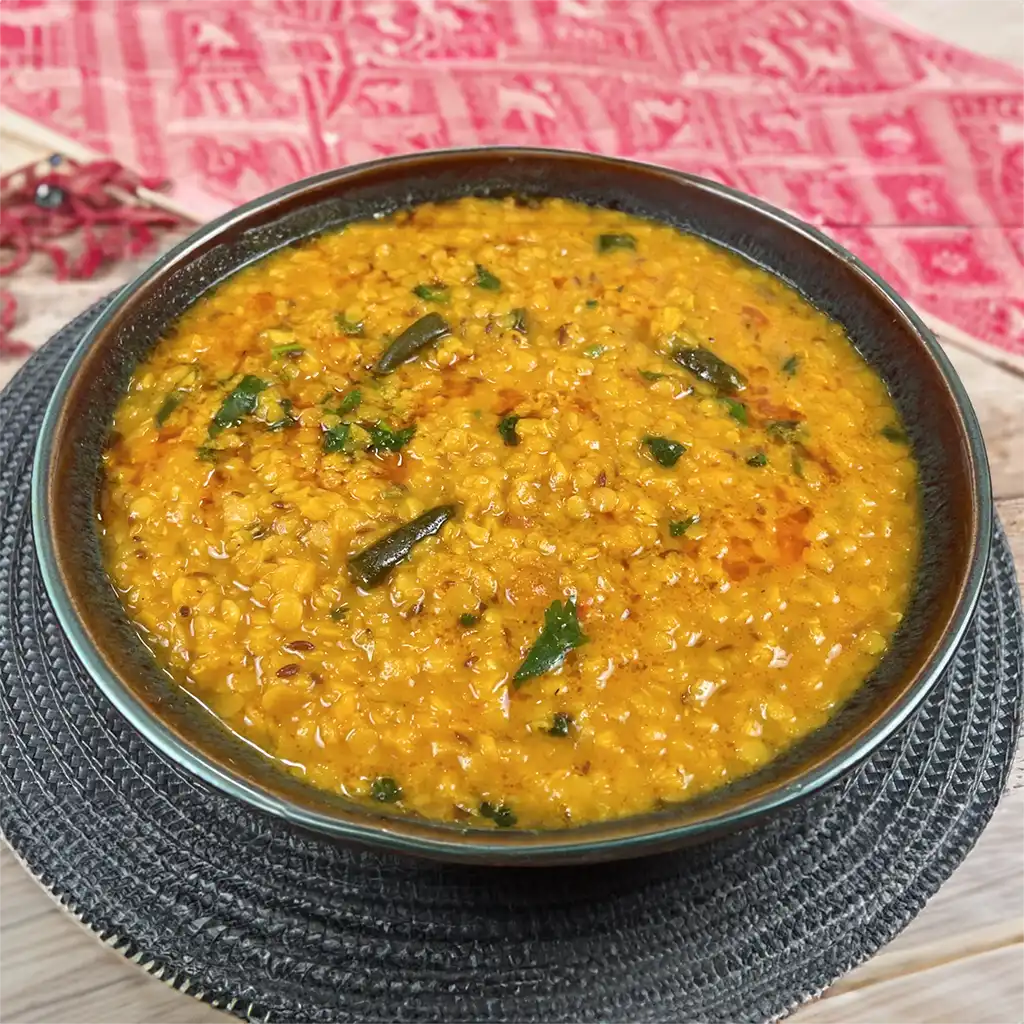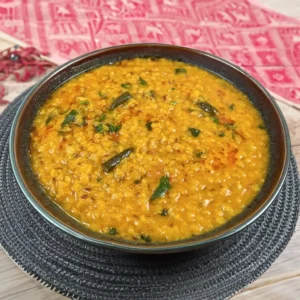
If you’re seeking a hearty and flavorful dish to spice up your dinner routine, look no further than Red Lentil Curry.
Originating from the rich culinary traditions of South Asia, this recipe combines the earthy goodness of lentils with a tantalizing blend of spices, creating a dish that’s both comforting and satisfying.
Despite its exotic origins, this curry is surprisingly easy to make, making it perfect for beginner cooks looking to expand their culinary repertoire.
Expert Tip: Don’t skip the step of tempering the spices in oil at the beginning. This process helps to release their flavors and aromas, enhancing the overall taste of the curry.
Lentils (Masoor Dal): Lentils provide a hearty base and a good dose of protein and fiber. They cook relatively quickly compared to other legumes, making them ideal for weeknight dinners.
Oil: Used for sautéing the aromatics and enhancing the richness of the curry.
Cumin Seeds (Jeera): Cumin seeds add a warm, nutty flavor and subtle earthiness to the dish.
Onion: Adds sweetness and depth of flavor to the curry as it cooks down.
Garlic: Provides a savory, aromatic base for the curry.
Tomatoes: Adds acidity and sweetness, balancing out the earthiness of the lentils.
Salt: Enhances the flavors of the other ingredients and brings everything together.
Chilli Powder: Adds heat and a touch of smokiness to the curry.
Turmeric Powder (Haldi): Lends a vibrant yellow color to the dish and has anti-inflammatory properties.
Green Chillies: Adds a spicy kick to the curry, but you can adjust the amount to suit your taste.
Coriander: Fresh coriander leaves add a burst of freshness and color to the finished dish.
Expert Tip: For a creamier texture, you can blend a portion of the cooked lentils before adding them back to the curry.
Expert Tip: Rinse the lentils thoroughly before cooking to remove any dirt or debris.
Absolutely! While red lentils (Masoor Dal) are traditional for this curry, you can experiment with other varieties like green or brown lentils for a different texture and flavor.
The level of spiciness can be adjusted according to your preference. If you prefer a milder curry, you can reduce the amount of chilli powder or omit the green chillies altogether.
Yes, this curry actually tastes even better the next day as the flavors have had time to meld together. Simply reheat it gently on the stovetop or in the microwave before serving.
This recipe is already vegan-friendly as it doesn’t contain any animal products. Just make sure to use oil instead of ghee for sautéing the aromatics.
Yes, this curry freezes well. Allow it to cool completely before transferring it to an airtight container and freezing for up to three months. Thaw overnight in the refrigerator before reheating.
Here are some more recipes for you to enjoy! If you my recipes don’t forget to rate and leave a comment.
If you have any recipe suggestions, please do not hesitate to ask me. A great way to stay in contact with me is through Instagram, Facebook, Twitter and YouTube. Don’t forget to tag me @CookwithNabeela in your recipe photos!

Subscribe now to receive my latest recipes directly in your inbox. Stay up-to-date and never miss out!

I love to cook! I want to share with you my favourite, delicious family-friendly recipes. I want to inspire you to create fantastic food for your family every day.
Latest comments (4)
Followed the recipe. Best dal I’ve eaten. This will be in regular rotation. Just delicious.
Thank you for trying out my red lentil curry recipe! I’m so glad to hear that it turned out well and that it was the best dal you’ve eaten. It’s always wonderful to hear positive feedback like this, and I’m thrilled that the recipe will be in your regular rotation. Thanks again for sharing your experience and kind words, it means a lot to me!
Thanks so much made this twice thanks to you!! X
I’m glad you enjoyed my recipe Aisha.